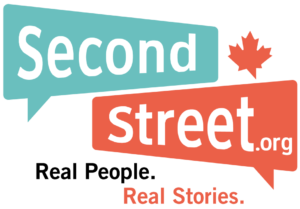In the past four months, politicians from across the political spectrum have started talking about something really important — patients dying on waiting lists. It’s about time.
In Alberta, the NDP’s health critic raised concerns about SecondStreet.org research that found the provincial government has stopped tracking data on patients dying while waiting for health services. During B.C.’s fall election, the Conservative Party campaigned on carefully tracking and disclosing data on waiting-list deaths.
Most recently, the Ontario Liberals wrapped their election campaign bus with an enormous message scrawled across it: “11,000 people died waiting for surgery last year.” That figure is incorrect — as Terry Newman has reported, Ontario Health says 1,600 — but at least they’re drawing attention to a serious problem.
SecondStreet.org’s research on this issue was inspired in part by a story out of Ontario: 18-year-old Laura Hillier’s tragic experience with the health system. The teen was fighting cancer and had a bone marrow donor lined up, but died in 2016 after waiting over half a year for a surgical bed to open up. We wondered — how many other stories are out there like Laura’s? After all, governments don’t disclose these stories proactively: patients and their families speak out.
Governments have always been more interested in holding everyone else accountable.
On the Alberta government’s website, you can read about how health inspectors went into a pre-school last year and found the kitchen sink didn’t have a paper towel holder. Oh the humanity! In B.C., the government website reported about a workplace accident in which an employee fell off some scaffolding and received a “bruise.” Across the country we find similar examples of governments reporting on problems that occur at private workplaces.
And yet there’s nothing but silence when it comes to patients dying on government waiting lists in the health system. In fact, government officials don’t even seem to look at the data themselves. SecondStreet.org has had to pay thousands of dollars for governments to gather, and hand over data on waiting-list deaths. If governments had gathered the data to review it themselves, they couldn’t charge us for it.
For leadership in this area, provincial governments should look to what Nova Scotia has provided in the past. In the 2022-23 fiscal year, its government noted that 532 patients died while waiting for various surgeries. Of these, 50 were potentially lifesaving surgeries like a heart operation. Finally, of those 50, 19 had waited longer than the maximum recommended wait time when they died. This level of analysis helps everyone understand just how many people may have died because the government took too long.
If every provincial government conducted such analysis, we would see a giant leap forward in health-care accountability. But it’s apparently a higher priority for the government to point out that a daycare didn’t have a paper towel holder.
While carefully tracking, analyzing and disclosing data on waiting list deaths can help, governments need to go one step further and actually fix the broken health system. Government spending on health care has exploded over the past 30 years and yet we’re obviously in a crisis. More spending won’t fix the problem.
If we look to Europe, we see governments with universal health-care systems that outperform Canada. Why? One reason is that they fund services for patients, while governments in Canada fund health systems. European countries use “activity-based funding.” Their hospitals receive funds every time they help a patient. In Canada, by contrast, governments provide hospitals with large cheques each year and tell them to do their best.
Europe’s model incentivizes hospitals: helping more patients results in more funding. Activity-based funding also encourages focusing expenditures on what helps patients. Conversely, Canada’s model often sees health dollars spent on bureaucracy or wasted on things like the $3 million the Windsor hospital has lost running its own Tim Hortons stands.
Europe also has a less ideological approach to health care. Governments will partner with anyone — non-profit, for-profit, government — that can provide quality care at a competitive rate. In Sweden, for example, SecondStreet.org visited a government-owned but privately-managed hospital that provided lower-cost treatment than the government-run hospital down the road. In Canada, there are union protests and fear-mongering whenever governments partner with non-government health-care facilities that don’t use unionized workers.
These are just a couple examples of reforms that could help. At long last, we’re hearing more politicians talk about the ultimate cost of our health system: patients dying on waiting lists. With any luck, we’ll also hear politicians talk more about reforms like these that could increase accountability and save patients’ lives.
Colin Craig is president of the SecondStreet.org think-tank.



